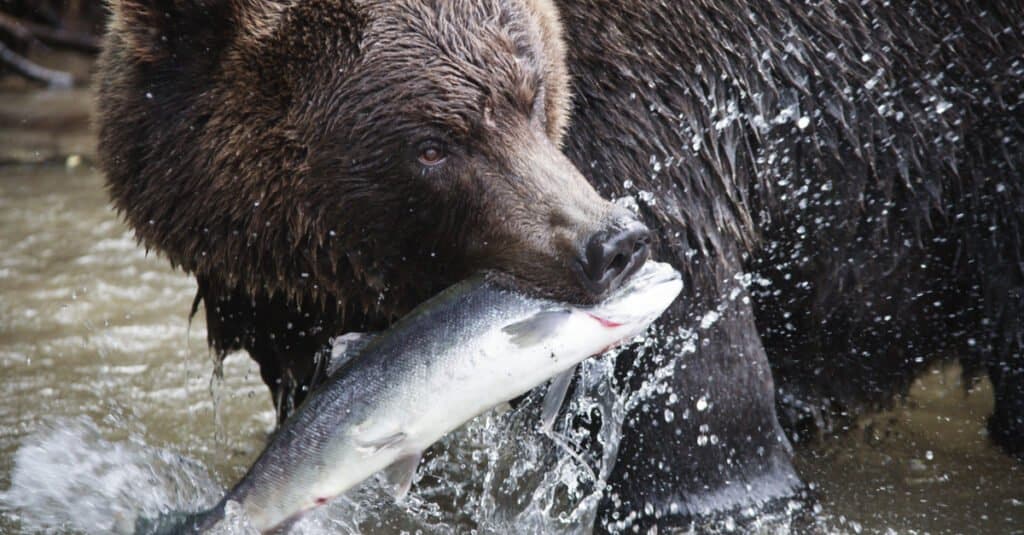
Grizzly bears are an example of a keystone species.
©DPS/Shutterstock.com
All animals and plants are important to their environment, but are some more important than others? Every ecosystem consists of complex interactions between plants, animals, and abiotic (nonliving) factors that keep the system in balance. If a very important species was removed from its ecosystem, is that enough for the entire ecosystem to collapse? What will happen to other species if one species becomes extinct? These are important questions that ecologists and environmental biologists ask when evaluating different ecosystems, especially in the face of climate change. As the natural world changes at unprecedented rates, it is important to understand the potential consequences. This article will define “keystone species” and explore why they are so important to their environments.
What is a Keystone Species?
To put it simply, keystone species have a disproportionate impact on their ecosystems. If they were removed, an ecosystem would changed dramatically. Put even more succinctly, keystone species hold entire ecosystems together!
Yet, even that description might leave questions about what keystone species are. Are they only predators, could they be unassuming plants? Below we’ll breakdown the exact nature of keystone species and why they’re so important to their ecosystems.
What is an ecosystem?
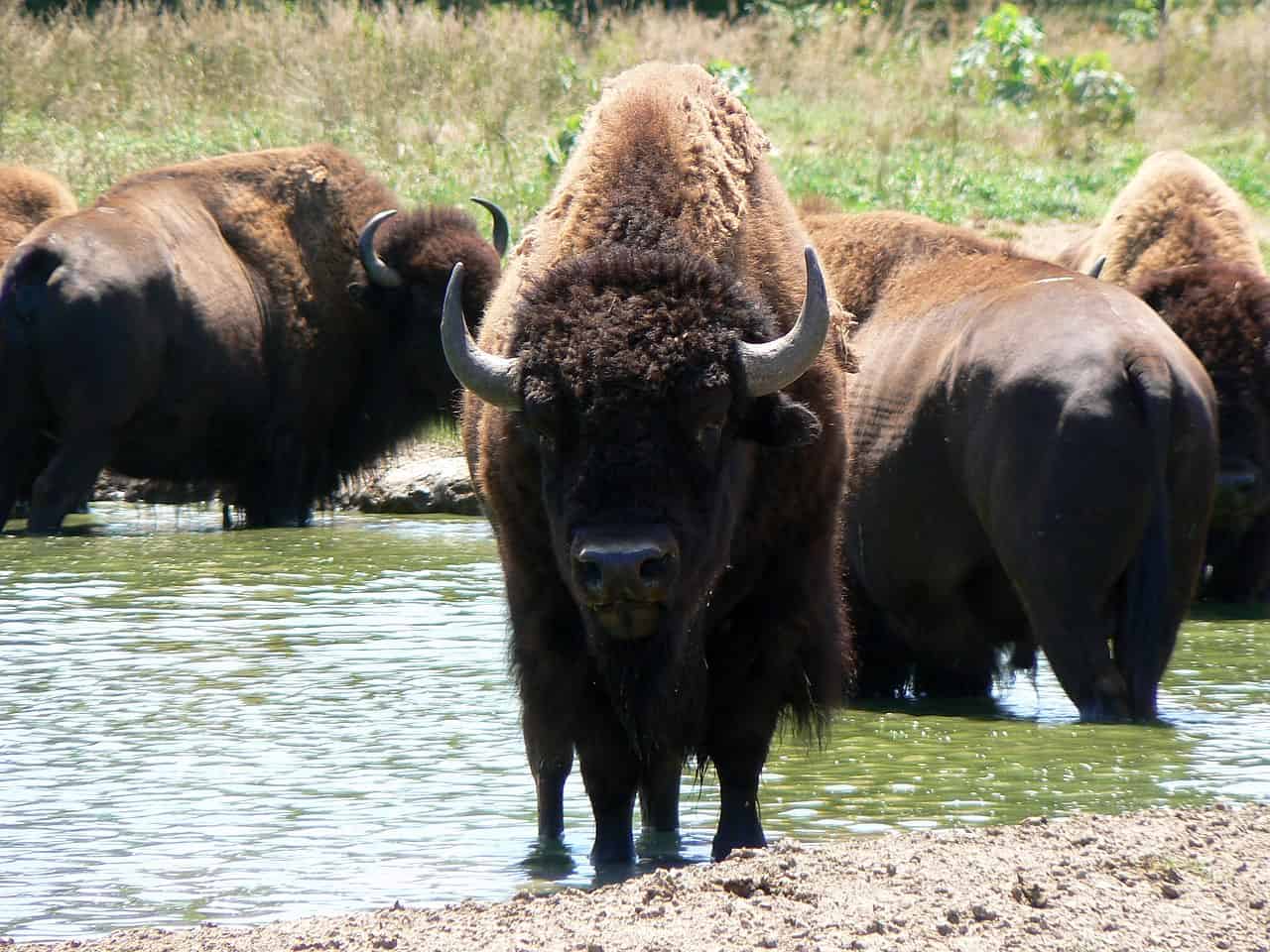
An ecosystem includes plants, animals, and nonliving components of the environment, like this watering hole. Bison are an example of a keystone species.
©User: MONGO / Public domain, via Wikimedia Commons – License
An ecosystem is a community of interacting organisms, abiotic factors, and their environment. Organisms in an ecosystem include all plant and animal species. Abiotic factors include the weather, minerals that are present, available water, sunlight, and other nonliving elements of the environment. An ecosystem is ultimately concerned with how all elements of the environment and its inhabitants interact.
Different interactions in an ecosystem include consumption, competition, and mutualism.
- Consumption: describes predator versus prey interactions, parasitic interactions, and other situations where one organism is benefitting, and one organism is at a loss. A complete account of consumption interactions in an ecosystem is often called a food web.
- Competition: can occur between different species (interspecific) or within a species (intraspecific). Interspecific competition could be competition over territory or a food source, for example. Intraspecific competition could similarly be related to resource availability, competition over mates, or other forms of competition within a species. In competition-type interactions, both parties experience negative impacts.
- Mutualism: describes interactions where all parties benefit. For example, some ants provide acacia plants with protection from other insects in exchange for food and shelter from the plant. In this example, ants and acacia plants have a mutualistic relationship.
What is a trophic cascade?
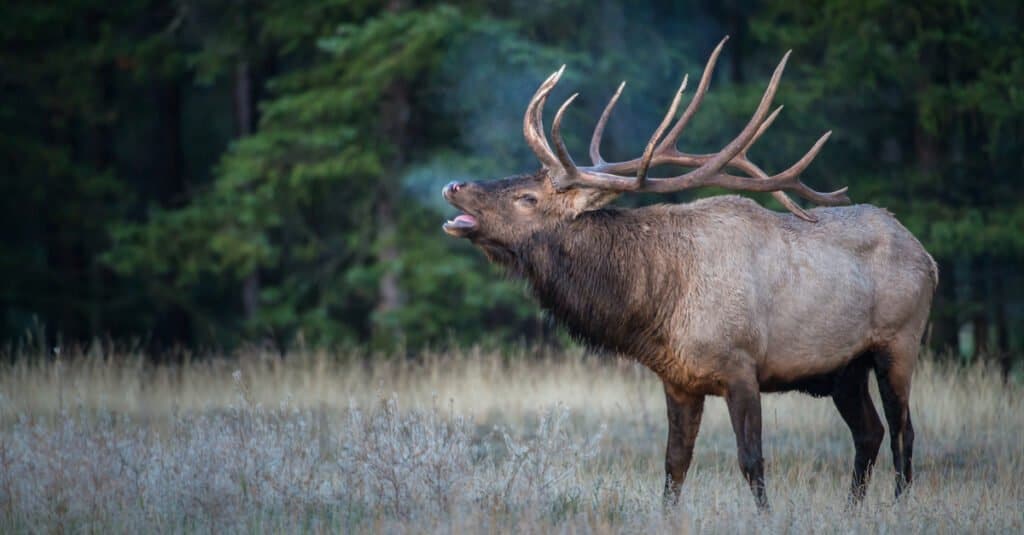
Elk are primary consumers, meaning they eat producers such as grasses and other plants.
©Ghost Bear/Shutterstock.com
Community organization
In an ecosystem, organisms can be organized into a hierarchy. Producers such as plants, produce their own food and are at the bottom of the hierarchy. Primary consumers, those that eat plants, come next. Secondary consumers feed on primary consumers, tertiary consumers feed on secondary consumers and so on. For example, alfalfa produces carbohydrates via photosynthesis, elk feed on alfalfa, and coyotes feed on elk. In this example alfalfa is the producer, elk are the primary consumers, and coyotes are the secondary consumers.
This community structure can be influenced from the bottom-up, or from the top-down. If abiotic factors, such as sunlight or water availability, affect the abundance of producers in an ecosystem, it will in turn affect the abundance of primary consumers, which will affect the abundance of secondary consumers. To continue the earlier example, if there is a drought that causes a decrease in alfalfa, elk populations will decrease due to lack of food. Coyote populations will then decrease because of the decreasing elk populations. This is bottom-up control.
Top-down control occurs when a change in the number of secondary or tertiary consumers affects the number of primary consumers, which then affects the number of producers. For example, if humans hunted all the coyotes in an ecosystem, elk populations would grow because of decreasing predation. Their growing population would then deplete the alfalfa population. Changes at the top of the hierarchy in this example have impacts down the hierarchy.
Trophic cascades
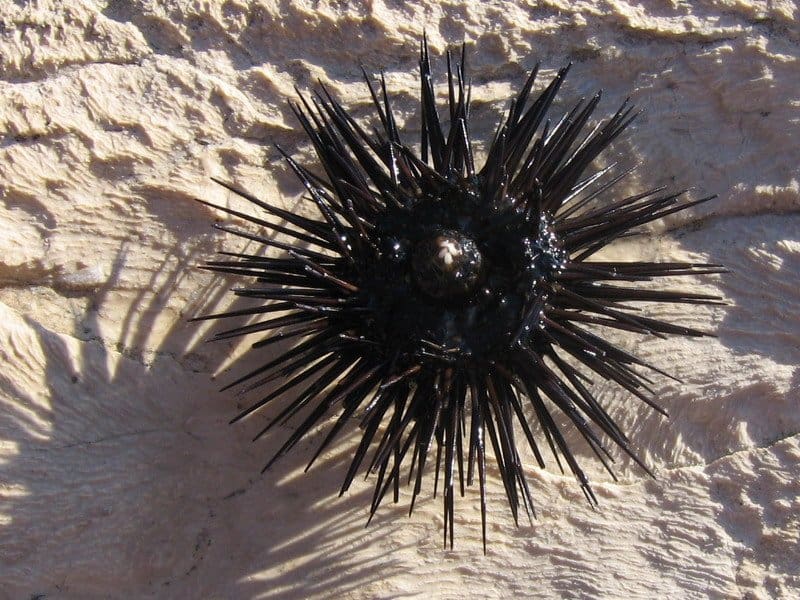
Sea urchins are primary consumers and are eaten by secondary consumers, otters.
©Lacen – Public Domain
When changes in top-down control cause substantial effects two, three, or more links away in a food web, a trophic cascade has occurred. Therefore, in simple terms, a trophic cascade is when a change at the top of the food chain has rippling, or cascading, effects down the food chain.
Biologist Robert Paine conducted an incredibly important ecological study that revealed this phenomenon. On the Washington coast he observed two tidepools each with sea urchins and kelp. When he removed the sea urchins (primary consumers), the kelp population (producers) grew instantly. But why was nothing regulating the sea urchins if they were eating all the kelp?
Paine compared two similar ecosystems containing kelp and sea urchins. In one ecosystem there was a healthy otter population and in the other ecosystem there were no otters. The ecosystem with otters maintained balanced kelp and sea urchin populations, whereas the ecosystem without otters was completely overrun by sea urchins and had no kelp. This exemplified top-down control because without the secondary consumer (otters), the primary consumer (sea urchins), became overpopulated and depleted the producer population (kelp).
What is the keystone species concept?
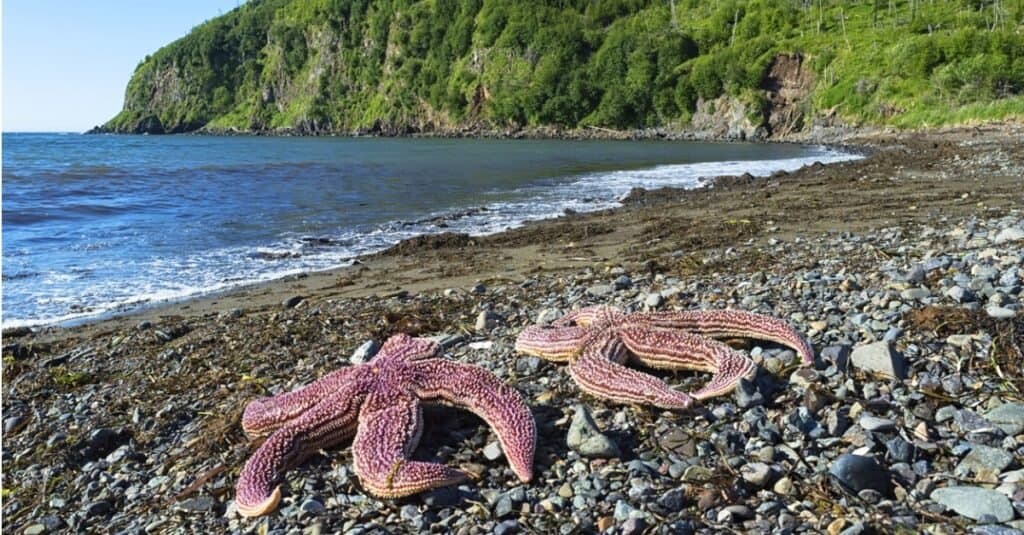
Ochre starfish were the first to bear the title “keystone species” because of Robert Paine’s research.
©iStock.com/bksrus
Biologist Robert Paine continued his research and developed the keystone species concept. He conducted further research on the Washington coast focusing on starfish. He identified all species on the coastline and mapped their interactions. In doing this, he determined that a purple starfish was the predator at the top of the food chain. Paine collected the starfish and threw them into deeper water as to remove them from the shoreline ecosystem. He then monitored the other species in the absence of starfish. Of the 15 different species initially catalogued, after a year and a half only 8 remained. After seven years, all that was left was a monoculture of clams. He came to the conclusion that a single predator can regulate the entire composition of a community.
Robert Paine coined the term “keystone species”. In architecture, the element in the middle of an arch where the two sides of the arch meet, is the keystone. If you remove the keystone, the arch will collapse. This is true of keystone species in that if they become extinct, their ecosystem is vulnerable to collapse. Keystone species are species that have a disproportionately large impact on their ecosystem relative to their population density. In other words, species that impact their environment in very large ways even if they aren’t the most populous species.
Why is this important today?
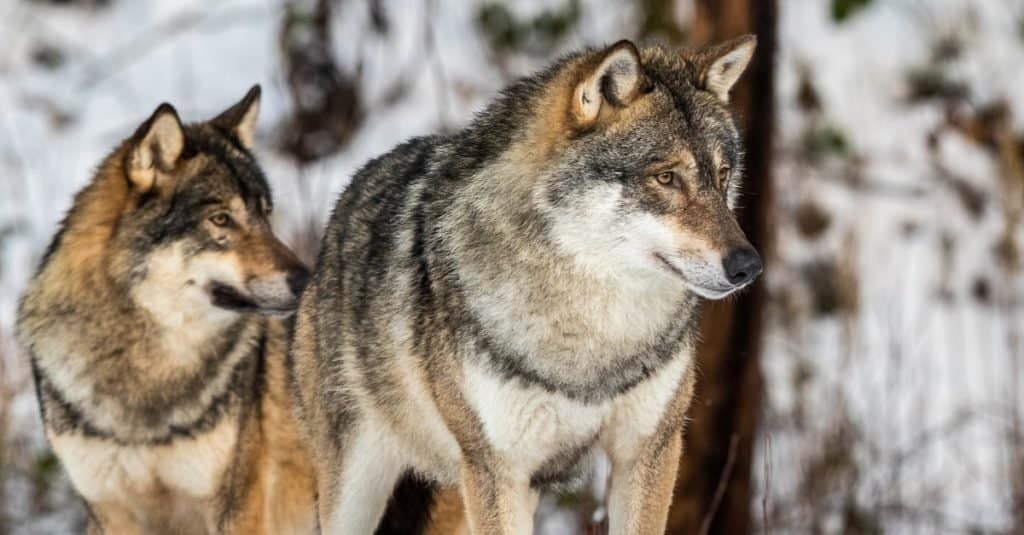
Gray wolves are an example of a keystone species.
©Lillian Tveit/Shutterstock.com
Understanding keystone species and their tremendous role in their environment is incredibly important. As global warming and human-caused habitat destruction threaten an increasing number of species, extinction events are likely. Environmentalists and those seeking to conserve vulnerable species must understand the roles and interactions of organisms in an ecosystem so they can prevent ecosystems from collapsing entirely.
A good example of this is the wolf population in Yellowstone National Park. Wolves are apex predators, meaning they have no natural predators and are therefore at the top of the food chain. By the mid-1900s, gray wolves were almost entirely eliminated from mainland U.S. As a result, the elk population exploded. Elk overpopulated the area and exhausted food resources. Following the proliferation of elk, their local food source of young aspen trees greatly decreased in number. The depletion of aspen trees also bore heavy effects on other species. This exemplifies how one species, like gray wolves, can hold great influence over an ecosystem. It is therefore imperative that we protect keystone species around the world because their ecosystems rely on them to maintain balance.
Examples of Keystone Species
Examples of keystone species include:
- Beavers
- Wolves
- Jaguars
- Otters
- Starfish
- Sharks
- Elephants
- Brown Bears
- Bees
The photo featured at the top of this post is © iStock.com/slowmotiongli
Thank you for reading! Have some feedback for us? Contact the AZ Animals editorial team.






